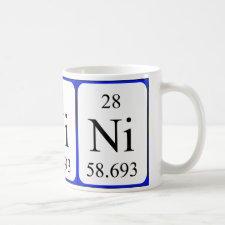
Authors: Guo N, Sun WY, Liao B, Ding SL, Su SJ
Article Title: Separation of nickel and cobalt in aqueous solution by Ni2+-imprinted chitosan beads: behavior and mechanism.
Publication date: 2017
Journal: Desalination and Water Treatment
Volume: 58
Page numbers: 93-105.
DOI: 10.5004/dwt.2017.0084
Alternative URL: https://www.researchgate.net/profile/Bing_Liao4/publication/312255327_Separation_of_nickel_and_cobalt_in_aqueous_solution_by_Ni2-imprinted_chitosan_beads_behavior_and_mechanism/links/58bfe00b92851c7b72763dc4/Separation-of-nickel-and-cobalt-in-aqueous-solution-by-Ni2-imprinted-chitosan-beads-behavior-and-mechanism.pdf
Abstract: Biosorbent Ni2+-imprinted chitosan beads were synthesized using epichlorohydrin cross-linking and nickel ion as the template for the selective adsorption of nickel ions from bimetallic aqueous solution comprising Ni2+ and Co2+. The effect of several parameters, i.e., pH, initial metal ions concentration, and contact time on the adsorption capacity and separation coefficient was examined. The selective and competitive adsorption processes of nickel and cobalt ions on the Ni2+-imprinted chitosan beads were studied separately. The equilibrium adsorption data of nickel could be well fitted with the Langmuir model even in the presence of high background cobalt concentrations, and the kinetics data were best fitted with the pseudo-second order kinetics model. In sole solution, the non-selective adsorption capacities of nickel and cobalt reached maximum (44.8 and 17.8 mg g-1, respectively) at a solution pH of 5. In a binary metal species solution, when the cobalt-to-nickel concentration ratio was 1,500, the separation coefficient (KNi/Co) was ~45, indicating the excellent selectivity of the beads toward nickel adsorption. It was also found that initially adsorbed cobalt ions on Ni-imprinted chitosan beads were displaced by subsequently adsorbed nickel ions from the solution. It was speculated that the displacement result from an adjacent adsorption and repulsion mechanism. Additionally, Fourier transform infrared and X-ray photoelectron spectroscopy results revealed that the Ni2+-imprinting technology enabled the generation of abundant recognition sites for nickel ions on the Ni2+-imprinted chitosan beads and amine groups primarily bound to Ni2+ via chelation
Template and target information: nickel ion, Ni(II)
Author keywords: Ni-imprinted chitosan, Separation coefficient, nickel, cobalt



Join the Society for Molecular Imprinting

New items RSS feed
Sign-up for e-mail updates:
Choose between receiving an occasional newsletter or more frequent e-mail alerts.
Click here to go to the sign-up page.
Is your name elemental or peptidic? Enter your name and find out by clicking either of the buttons below!
Other products you may like:
 MIPdatabase
MIPdatabase









